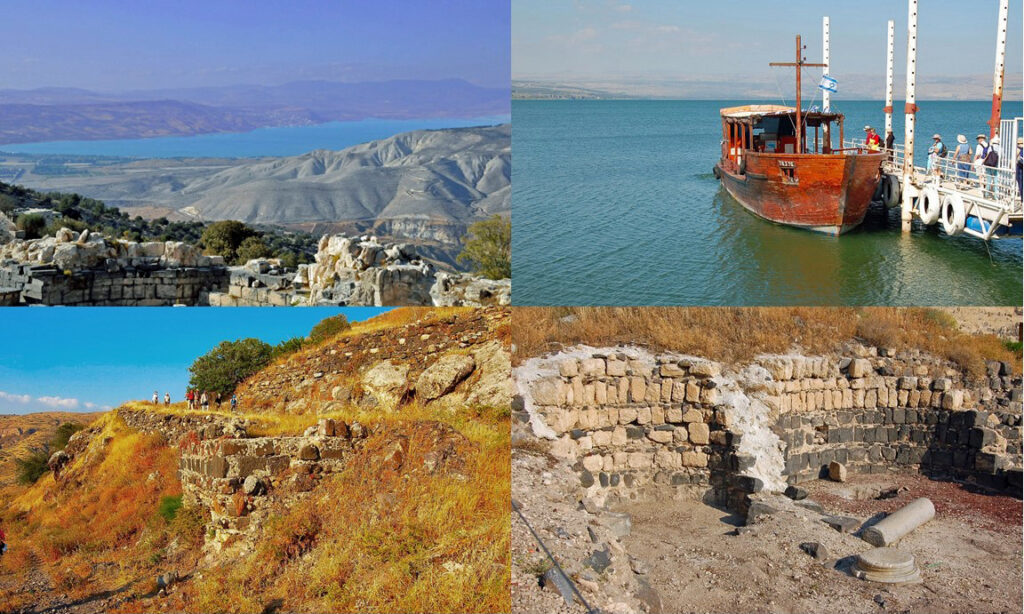Today, on our continuing trip through Israel and the Palestinian Territories, we travel 25 miles south from Caesarea Philippi (Banias) to the Sea of Galilee.
Eight miles wide, with an area less than 65 square miles, the harp-shaped Sea of Galilee is more accurately called a lake. Also known in the Bible as the Lake of Gennesaret, the Sea of Tiberias and the Sea of Kinnereth, its surface is about 700 feet below the level of the Mediterranean Sea, making it the world’s lowest fresh water lake. The Jordan River flows into the Sea of Galilee from the north and flows out of it for 88 miles south until it reaches the Dead Sea, the lowest lake in the world.
At the time of Jesus, two Greco-Roman cities that were part of the Decapolis overlooked the Sea of Galilee from the east. Hippos, founded by the Greeks in about 200 B.C., was atop a flat hill rising more than 1,000 feet above the water, near today’s Kibbutz Ein Gev It was probably the city Jesus had in mind when he said “a city that is set on a hill cannot be hidden.” Gardara, located just across the Jordan River in what is now Jordan, was probably where the New Testament says Jesus drove evil spirits from a man so tormented by them that not even chains could restrain him. The evil spirits then went into 2000 pigs, causing them to rush down a steep bank into the lake below, where they all drowned.
Today, boats built to resemble ancient fishing boats take visitors around the Sea of Galilee. The excavated ruins of Hippos, which include Byzantine era churches, are in the Hippos National Park. The ruins of Gadara are near the Jordanian city of Umm Qais, accessible from Israel via the Beit She’an border crossing.
